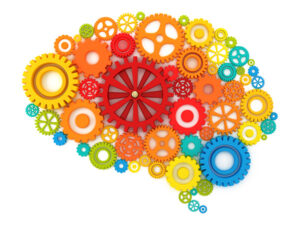May 13, 2025

Understanding how the brain changes after a stroke is key to knowing how to best support someone you love.
One moment can change everything. A stroke doesn’t usually give warning. It disrupts daily life instantly—leaving families scrambling for answers and care teams focused on urgent decisions. When the dust begins to settle, you start to see how the brain changes after a stroke as the long road to recovery begins.
If you’re helping someone recover from a stroke, you might be trying to understand why they seem different, what kind of recovery is possible, or how to adjust your support at home. Stroke recovery isn’t just about physical rehabilitation—it’s deeply tied to how the brain was affected.
How Stroke Damage Impacts the Brain
When blood flow to the brain is interrupted during a stroke, brain cells are damaged or destroyed. This can lead to a wide range of changes in how a person moves, communicates, thinks, and behaves. The specific challenges depend on which part of the brain was affected.
Right Brain Stroke Effects
A stroke in the right side of the brain impacts the left side of the body. It can also interfere with awareness, visual-spatial skills, and judgment. You might notice:
- Trouble with spatial awareness, like misjudging steps or bumping into furniture
- Difficulty with insight or safety awareness, which can lead to risky decisions
- Memory lapses related to recent events or conversations
People with right-brain strokes might appear overly confident or unaware of their limitations, which makes supervision important during the early stages of recovery.
Left Brain Stroke Effects
Strokes in the left side of the brain affect the right side of the body and are often tied to language and logical thinking. Common changes can include:
- Difficulty speaking, understanding speech, or writing
- Slower responses and a more cautious demeanor
- Trouble remembering new information or staying focused
A quiet environment and clear routines can often help someone feel more grounded and supported.
Strokes in Other Areas of the Brain
Some strokes impact the brain stem or cerebellum. These areas control balance, coordination, and vital functions like breathing and heartbeat. Damage here can result in severe physical limitations or difficulty with coordination and motor skills. In rare cases, a person may be fully conscious but unable to move or communicate verbally.
Adapting to a New Normal After Stroke
No two recoveries look the same. Some people bounce back quickly, while others need long-term support. For many families, the biggest hurdle is learning how to respond to unexpected behaviors or emotional shifts that follow a stroke.
You may need to make the home environment safer, adjust communication techniques, or provide help with basic tasks like dressing and bathing. But with the right mindset and resources, it’s possible to create a supportive space where progress happens.
We’re Here to Help
At Continuum, we work closely with families across St. Charles, Kirkwood, Chesterfield, and throughout St. Louis and St. Charles counties to help make stroke recovery less overwhelming. Our in-home care services are customized to meet each person’s abilities, goals, and needs. Whether it’s helping with everyday routines, tracking medications, or providing steady companionship, we’re here to lift some of the weight off your shoulders.
Call us at (314) 863-9912 to schedule a free in-home consultation and learn how we can help someone you love feel safe, supported, and encouraged during stroke recovery.
